September 24, 2025

The title "10 Real-World Examples of Operant Conditioning in Action" effectively illustrates the manifestation of operant conditioning principles in everyday scenarios. This article presents a variety of real-life examples, including:
These instances demonstrate how conditioning techniques successfully shape behaviors across diverse contexts, underscoring their relevance and application in real-world situations.
The principles of operant conditioning significantly influence various aspects of daily life, often in ways that remain unnoticed. From classrooms to workplaces, and even in parenting, the mechanisms of reinforcement and punishment are instrumental in shaping behaviors and outcomes.
This article explores ten compelling real-world examples of operant conditioning, demonstrating how these strategies can effectively influence behavior, enhance learning, and foster positive relationships.
However, amidst these benefits, one must consider: how can we optimize the balance between reinforcement and punishment to achieve the best results across diverse environments?
The demand for Board Certified Behavior Analysts (BCBAs) has surged dramatically, with job postings soaring from 65,366 to 103,150 in 2024 alone—an astounding 58% increase year over year. This growth highlights the critical need for specialized recruitment platforms like Hire ABA, designed to streamline the hiring process amidst a stark contrast between job openings and the number of certified BCBAs available.
Hire ABA is a cutting-edge recruitment platform that utilizes advanced algorithms and extensive industry connections to effectively match candidates with premier job opportunities that align with their skills and career aspirations. This efficient approach not only saves valuable time for job seekers but also enables employers to connect with qualified professionals who meet their specific requirements in the rapidly expanding field of Applied Behavior Analysis (ABA) therapy.
Are you facing challenges in finding the right talent in this competitive landscape? Hire ABA enhances the recruitment experience by leveraging technology to ensure that both candidates and employers benefit from a more efficient and targeted hiring process. With the on the rise, now is the time to take action. Trust Hire ABA to facilitate your hiring needs and connect you with the best professionals in the field.
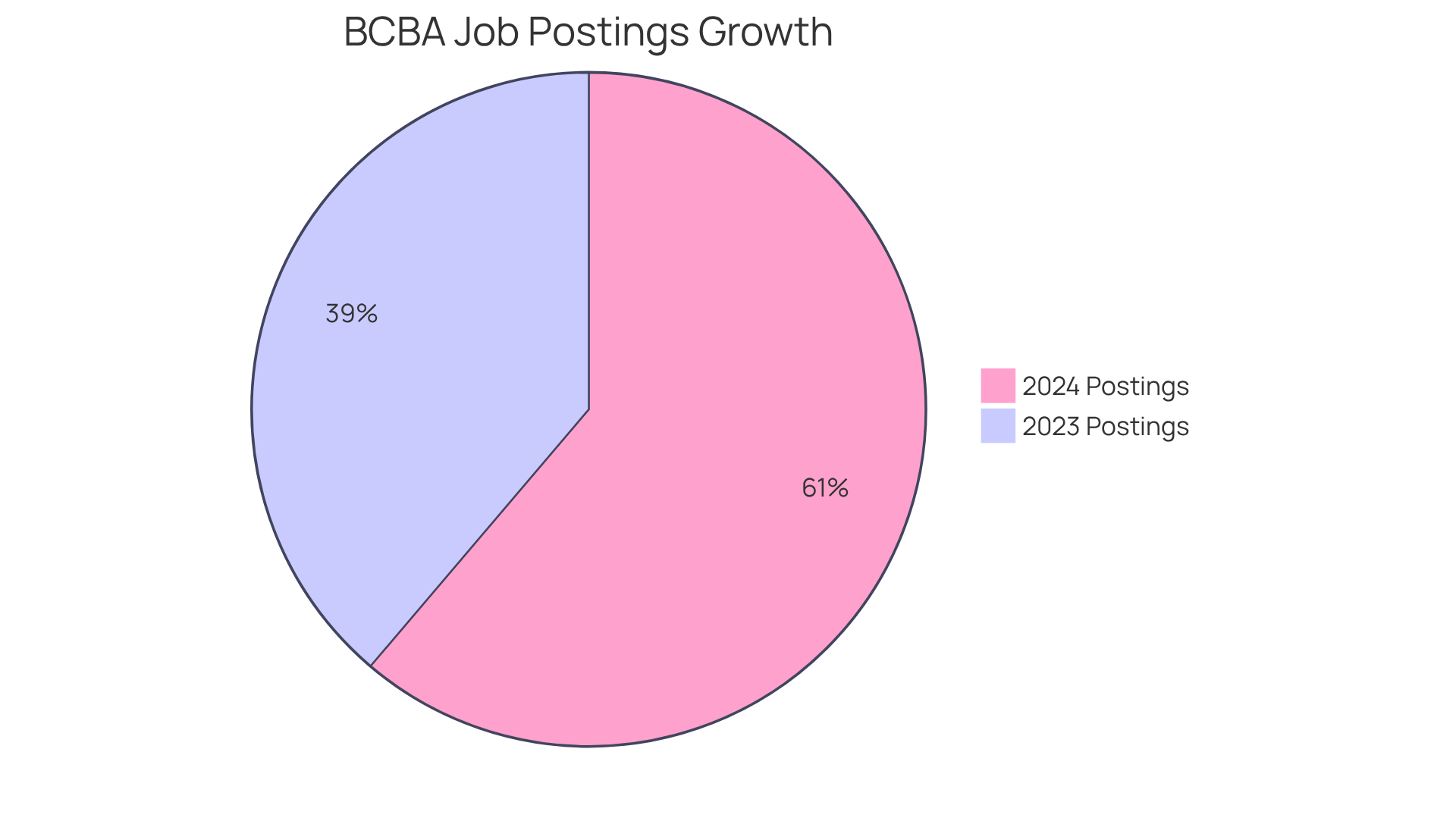
In the realm of animal training, constructive encouragement stands as a pivotal method for fostering preferred behaviors. Consider the scenario where a dog sits on command and receives a treat, which serves as one of the examples of operant conditioning; this action reinforces the association between sitting and a positive outcome. Such reinforcement not only solidifies the behavior but also cultivates a beneficial bond between the trainer and the animal.
Recent research underscores the notion that effective training should prioritize motivation over mere compliance. Dogs trained with encouraging reinforcement are significantly more likely to engage voluntarily in desired actions. Remarkably, dedicating just five minutes a day, Monday through Friday, proves more effective than a single extended session weekly. This approach enhances the dog's comprehension and provides to ensure a joyful learning experience.
This methodology aligns with modern trends in animal training that advocate for humane and engaging techniques. As seasoned dog trainer Victoria Schade asserts, "Her focus is dog-friendly techniques that help pets and their people understand one another better, and making sure that training is fun for both ends of the leash." By fostering a strong connection between the dog and its owner, trainers can create an environment conducive to effective learning and behavior management.
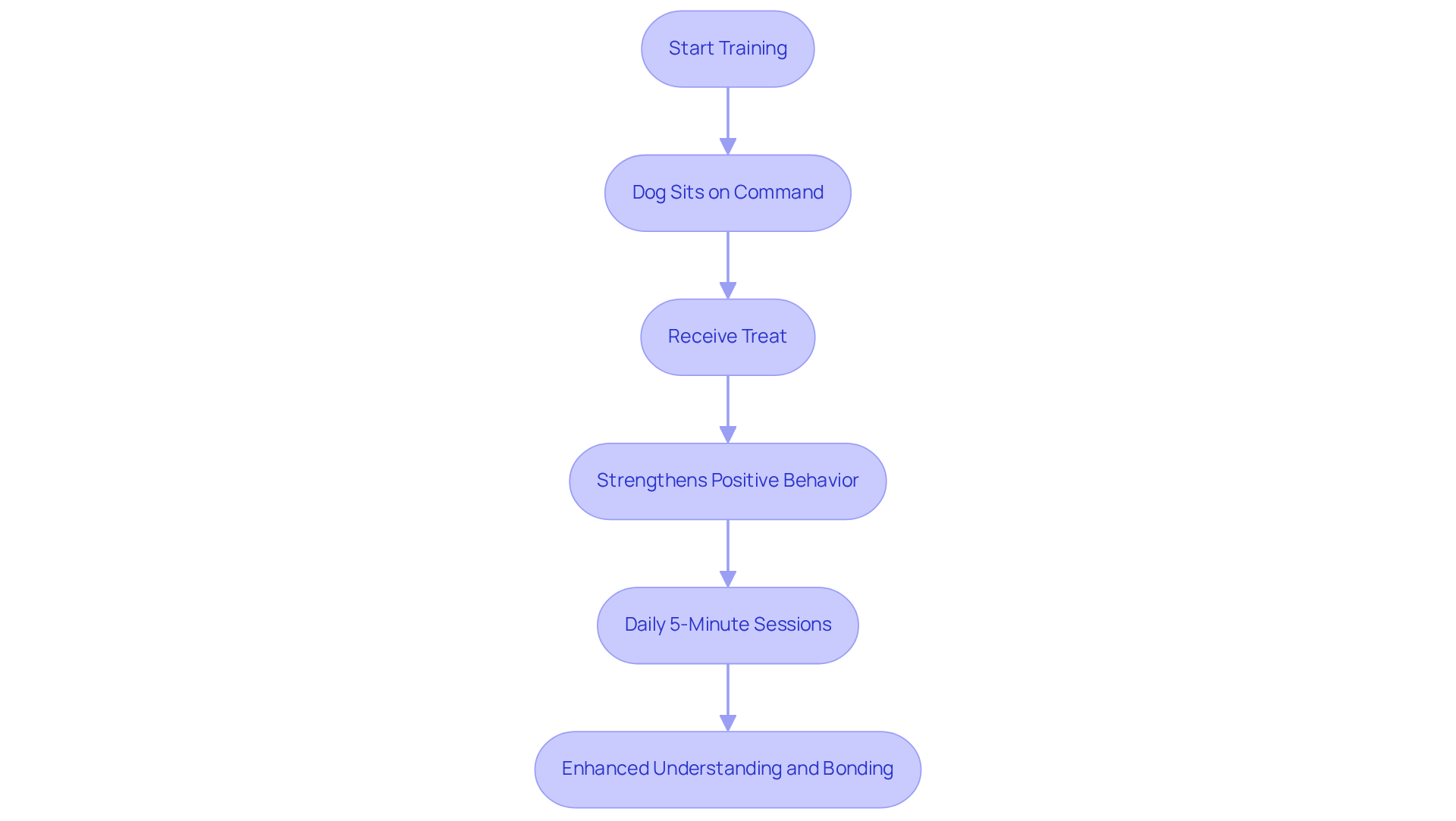
In educational environments, instructors frequently employ gold stars and smiley faces as tangible rewards to reinforce constructive behavior. This method of , as elucidated by B.F. Skinner, not only motivates students to engage in favorable behaviors—such as completing assignments and assisting classmates—but also cultivates a nurturing educational environment.
Research involving 2,536 students across 151 classes reveals that when educators implement positive encouragement, students can concentrate on tasks up to 30% more effectively, demonstrating a substantial increase in engagement and attention.
By adopting structured reward systems that serve as examples of operant conditioning aligned with Skinner's principles, educators can motivate students effectively.
Expert opinions underscore that specific and tailored praise surpasses general accolades, as it aids students in recognizing their strengths and areas for growth, thereby further enhancing their motivation and conduct.
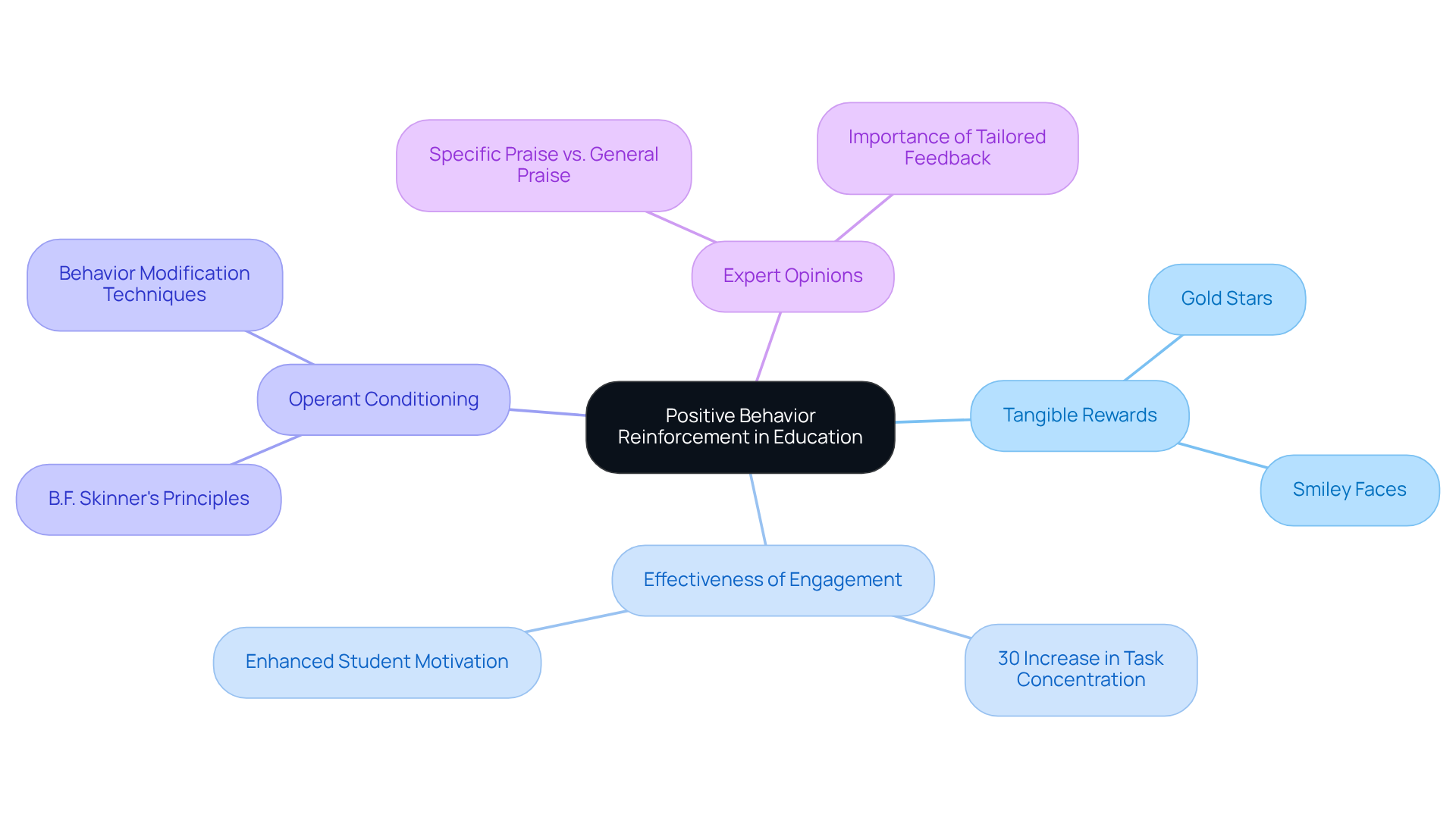
Speeding tickets exemplify negative conditioning in action. When drivers incur a ticket, they face an unpleasant consequence that motivates in the future. The removal of the threat of a ticket—an undesirable stimulus—reinforces the practice of adhering to speed regulations.
Research reveals that speeding constitutes 24.6% of traffic citations, while document violations account for 20.7%, underscoring the prevalence of various traffic violations. Experts emphasize the significant likelihood of receiving a ticket, with the average driver facing a 17% chance of being ticketed each year. As Daniel Robinson states, "You may be more likely to get a ticket than you think, and the consequences can be severe - and extremely costly."
This dynamic serves as examples of operant conditioning, illustrating how negative reinforcement effectively alters behavior, as drivers are incentivized to avoid the negative outcome of a ticket. Furthermore, recent trends in traffic law enforcement indicate an increasing emphasis on compliance, with telematics programs monitoring driving practices and providing feedback to promote safer habits.
Such measures not only aim to reduce violations but also cultivate a culture of responsible driving, ultimately contributing to safer roadways. Drivers are encouraged to remain mindful of their speed and consider enrolling in defensive driving courses to further enhance their safety on the road.
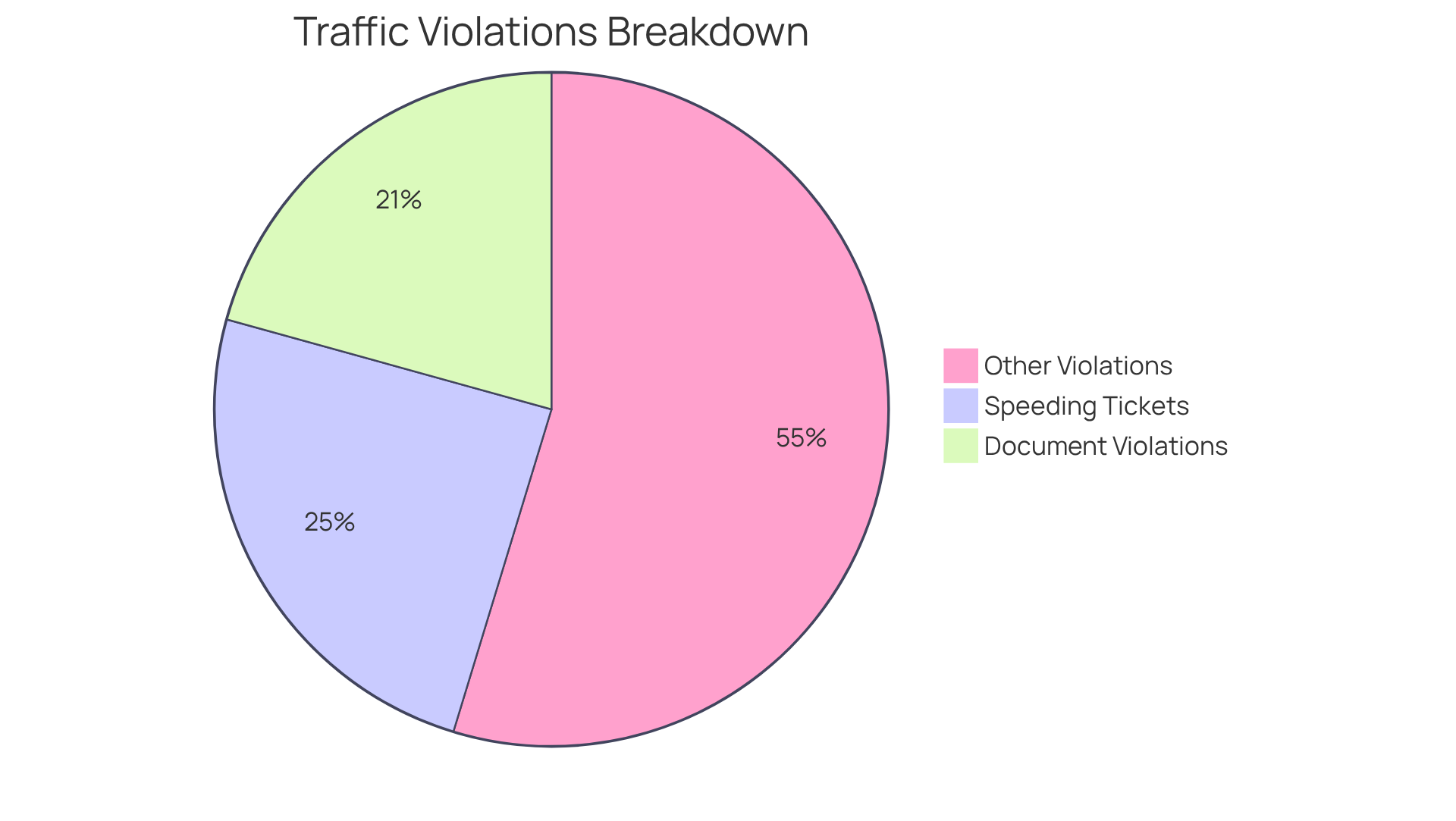
When a child throws a temper tantrum, parents often resort to , such as removing privileges or implementing time-outs. These strategies aim to decrease the frequency of tantrums by using examples of operant conditioning that link actions with negative consequences. However, research indicates that while punishment can yield immediate compliance, it is essential to complement these methods with constructive reinforcement, which are examples of operant conditioning that foster long-term behavioral improvement.
For instance, studies that provide examples of operant conditioning show that children who receive consistent positive feedback for appropriate actions are less likely to engage in tantrums. Child psychologists advocate for a balanced method, proposing that time-outs can be effective when applied thoughtfully, especially when paired with discussions about emotions and appropriate conduct. This dual strategy not only addresses the immediate issue but also promotes emotional regulation and problem-solving skills in children.
As parenting techniques evolve, there is a growing emphasis on understanding the underlying emotions driving tantrums. Parents are encouraged to validate their children's feelings before redirecting their behavior. This approach aligns with current trends in nurturing parenting, which prioritize connection and understanding over punitive measures, ultimately leading to healthier parent-child relationships.
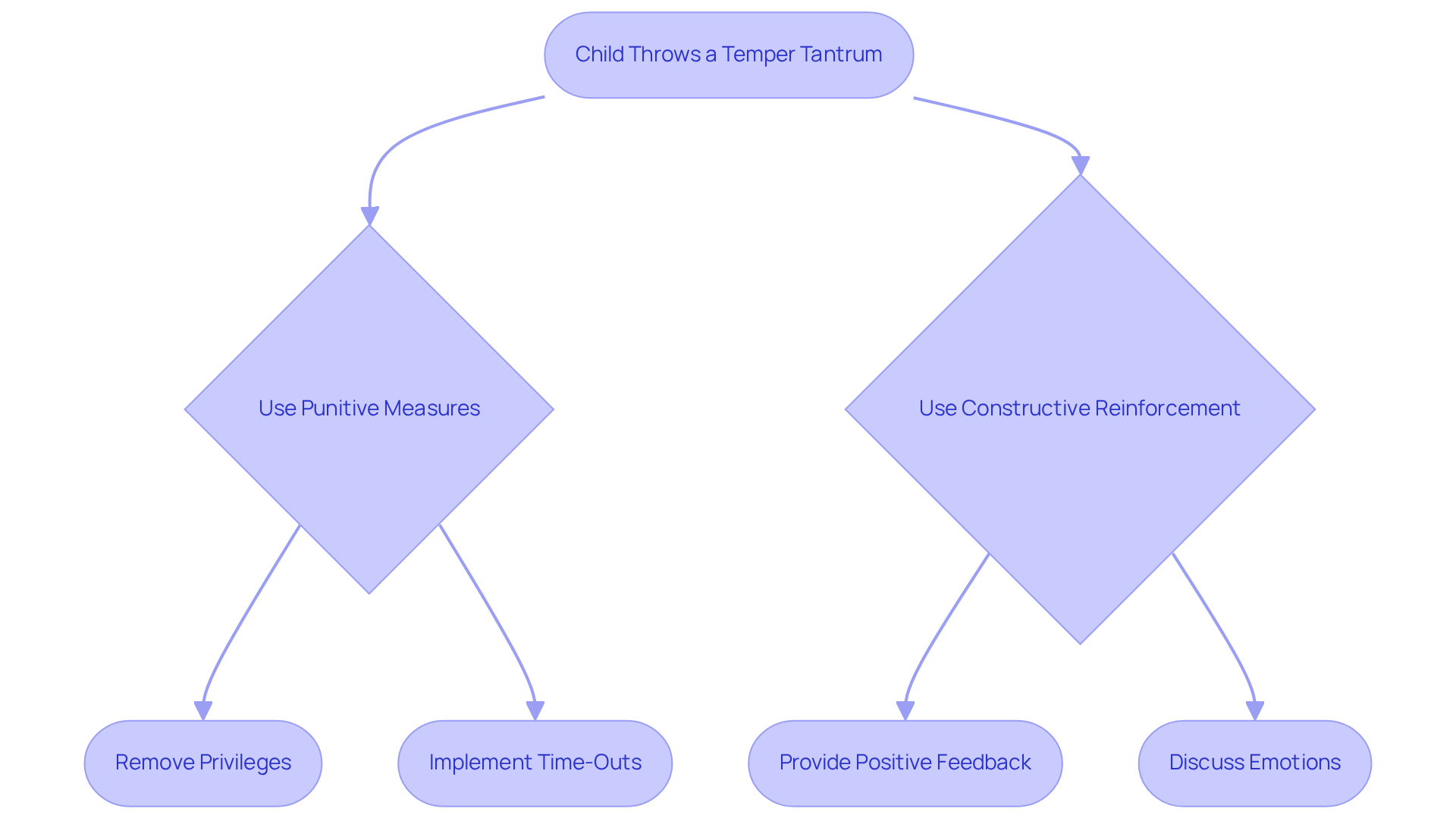
Service upgrade plans effectively leverage positive reinforcement to foster customer loyalty in the telecommunications sector. Consider this: 85% of consumers say loyalty programs increase their likelihood to stick with a brand. When a telecommunications provider offers discounts or enhanced features to customers who choose to upgrade their plans, it not only rewards existing customers but also . This strategy serves as one of the examples of operant conditioning, where desirable outcomes—such as cost savings or improved service—encourage continued patronage.
Real-world applications of examples of operant conditioning have shown that customers are more likely to remain loyal when they perceive tangible benefits from their engagement with the brand. Marketing experts highlight that such incentives can significantly impact customer actions, leading to higher retention rates and increased overall satisfaction. Furthermore, 73% of consumers are more likely to recommend a brand with a strong loyalty program. Increasing customer retention rates by just 5% can boost profits by 25% to 95%.
By aligning service offerings with customer expectations and preferences, companies can create a compelling value proposition that enhances loyalty and drives business success. Are you ready to elevate your customer engagement strategies and reap the rewards of increased loyalty?
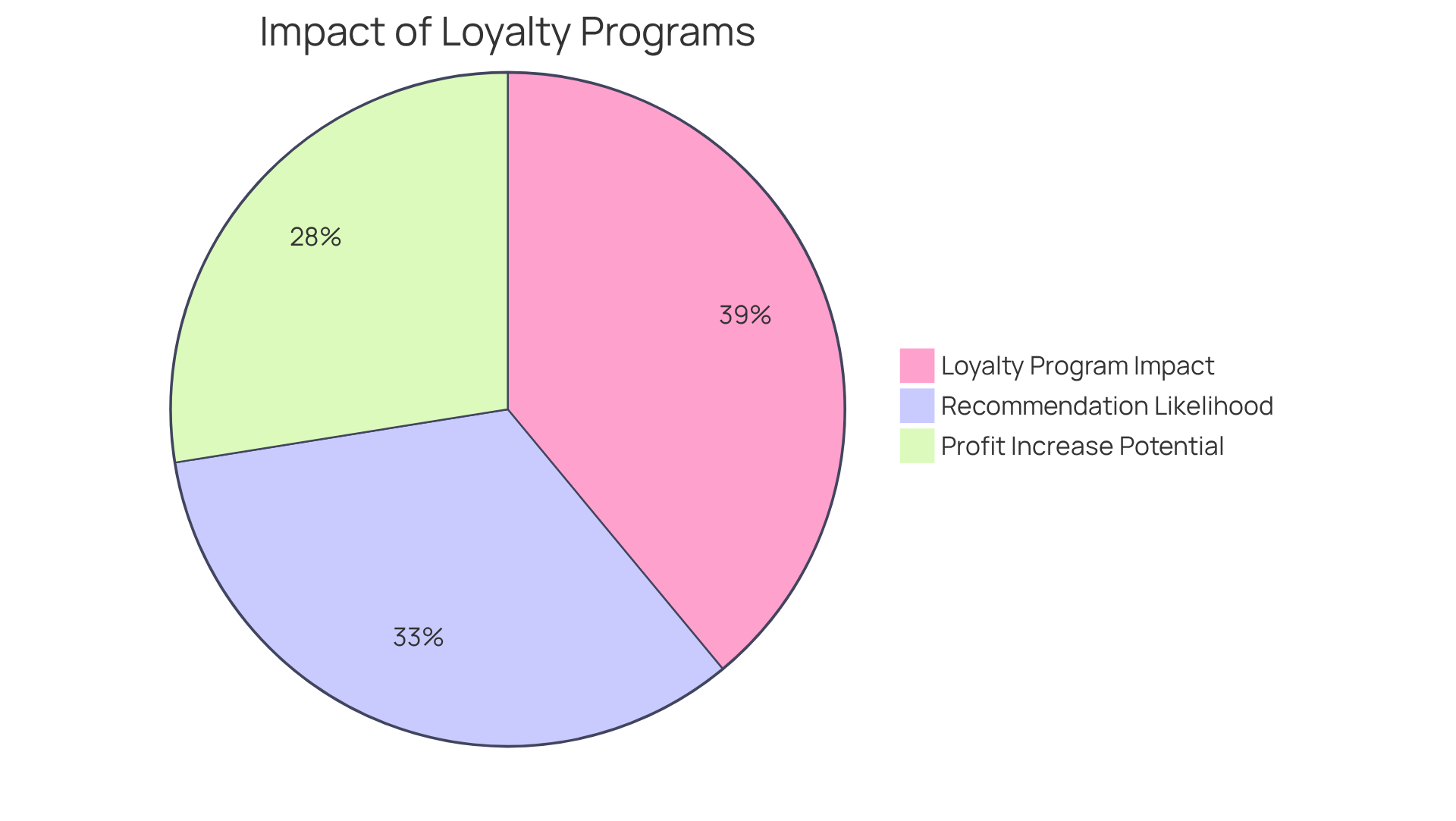
Time-outs represent a form of negative punishment utilized by parents to address undesirable behaviors. By temporarily removing a child from a rewarding environment, parents aim to diminish the likelihood of such actions recurring. While time-outs can indeed be effective, it is essential to couple this strategy with to encourage desirable behaviors and foster a nurturing environment.
How are you currently addressing unwanted actions in your parenting approach? Considering the balance of discipline and support can significantly enhance your child's development.

Credit card rewards initiatives exemplify positive reinforcement in consumer behavior. By offering incentives such as points, cash back, or travel rewards, these schemes motivate customers to utilize their cards more frequently. Research shows that 66% of consumers indicate that the ability to earn rewards significantly influences their spending habits, resulting in higher transaction values. Financial experts emphasize that this psychological appeal of earning rewards not only boosts customer satisfaction but also drives increased spending, providing examples of operant conditioning within the financial services industry. Notably, participants in loyalty schemes tend to spend 15% more each year than non-members, underscoring the tangible benefits of these strategies. As Rob Nichols, ABA president and CEO, asserts, 'Consumers highly appreciate their credit cards and the benefits associated with them.'
Furthermore, the strategic design of loyalty programs—including simplified mechanics and attainable rewards—plays a critical role in optimizing consumer engagement. Thus, credit card companies leverage beneficial encouragement to foster and engagement, ultimately enhancing customer lifetime value.
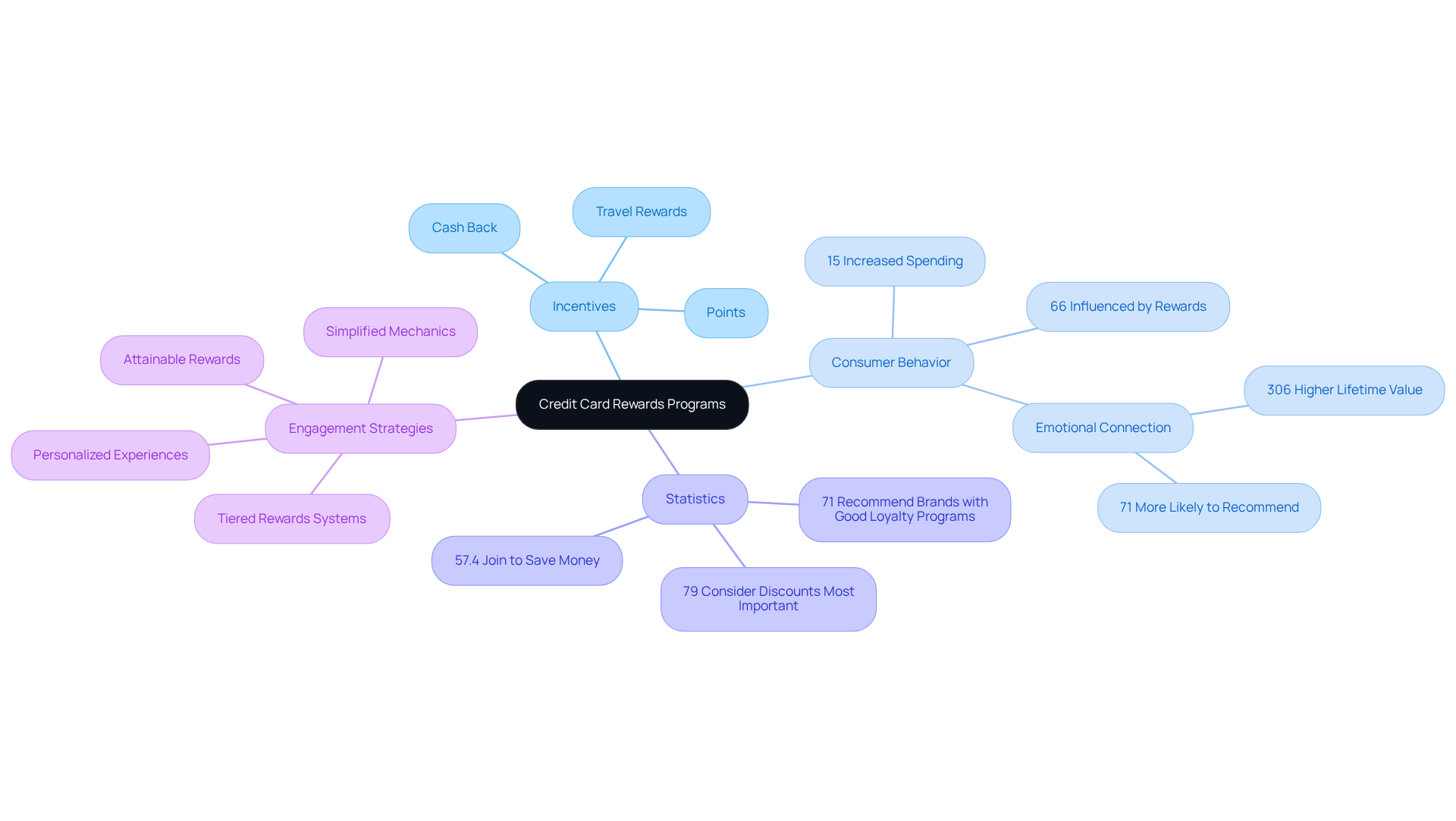
Salary bonuses serve as a powerful form of positive reinforcement in the workplace. When employees achieve or surpass performance targets, they are rewarded with bonuses, significantly boosting their motivation to excel. This practice not only enhances individual performance but also cultivates a culture of recognition and appreciation within the organization.
Research from the Aberdeen Group reveals that organizations with structured bonus incentive systems experience a 30% higher employee retention rate. This statistic underscores the importance of to foster a high-performance culture.
Furthermore, according to the Society for Human Resource Management (SHRM), 89% of employees report feeling more motivated when offered performance-based bonuses, leading to a notable increase in overall productivity. By effectively implementing these incentive initiatives, companies can create an atmosphere where employees feel valued and engaged, which serves as examples of operant conditioning in action.
Emotional engagement, as highlighted in various studies, plays a crucial role in achieving significant performance gains, further reinforcing the effectiveness of these incentive strategies.
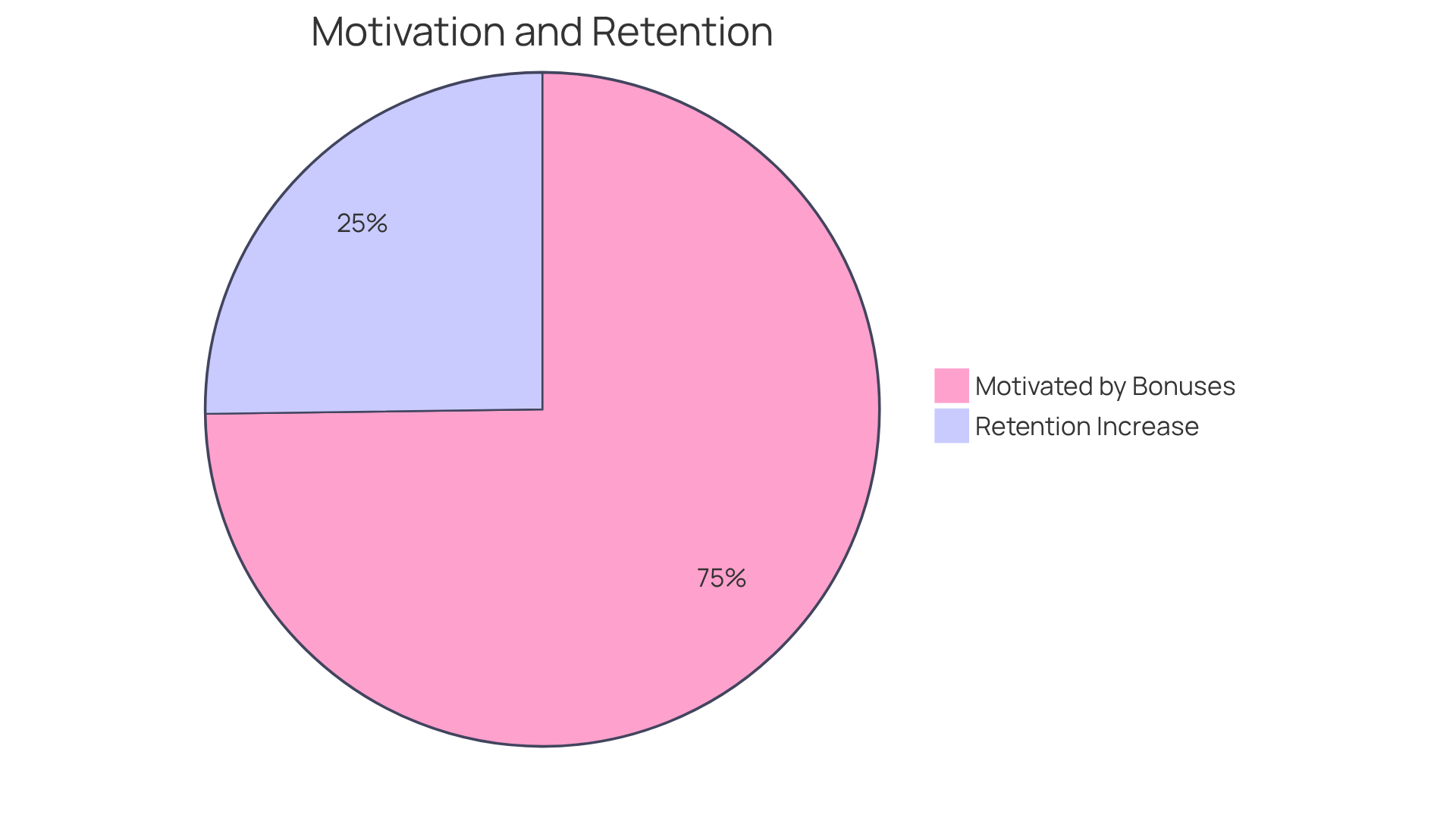
The 'Employee of the Month' initiative serves as a widely accepted method for recognizing and enhancing positive contributions within the workplace. By publicly acknowledging an employee's hard work and dedication, organizations not only motivate the recognized individual but also inspire their peers to strive for similar acknowledgment. This form of significantly boosts morale; studies show that 84% of employees feel more motivated when recognized for their efforts.
Furthermore, effective acknowledgment systems contribute to fostering a healthier workplace culture, as organizations with structured recognition initiatives report a 31% lower voluntary turnover rate. In fact, organizations with formal employee recognition initiatives experience 31% less voluntary turnover than those without, underscoring the effectiveness of organized systems. Additionally, manager recognition increases employee engagement by 60%, highlighting the crucial role of managerial acknowledgment in recognition strategies.
Such programs are examples of operant conditioning, illustrating how recognition can cultivate a productive environment and enhance overall employee satisfaction. As noted, 'When appreciation is missing, motivation fades — and talent starts looking elsewhere,' emphasizing the necessity of recognition in retaining talent. Moreover, peer-to-peer recognition significantly boosts employee satisfaction, with 90% of employees reporting increased satisfaction when acknowledged by peers. This comprehensive approach to recognition not only motivates individuals but also fosters a supportive and engaged workplace culture.
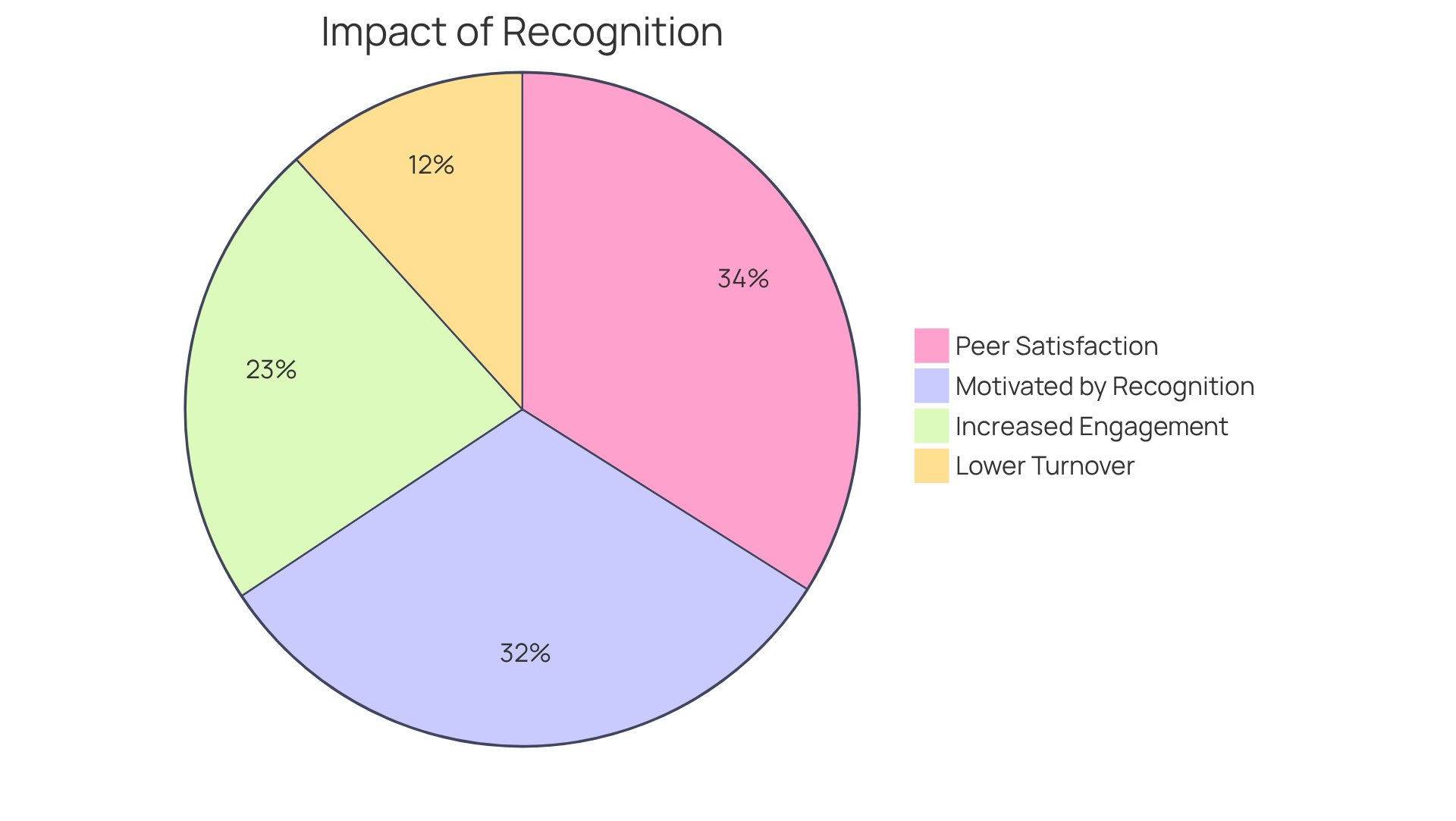
The exploration of operant conditioning through various real-world examples underscores its profound impact across multiple domains. The increasing demand for Board Certified Behavior Analysts (BCBAs) exemplifies this trend, highlighting the effective application of positive reinforcement in settings such as animal training and education. These principles are not merely theoretical; they are evident in everyday practices. Recognizing the significance of reinforcing desired behaviors—whether through rewards or consequences—is essential for shaping actions and outcomes effectively.
Key insights illustrate the versatility of operant conditioning. In educational environments, tangible rewards, such as gold stars, significantly enhance student engagement. Conversely, punitive measures like speeding tickets demonstrate how negative reinforcement can encourage compliance with traffic laws. Moreover, strategies such as salary bonuses and employee recognition programs reveal how positive reinforcement fosters motivation and loyalty within the workplace.
Ultimately, acknowledging the importance of operant conditioning across various aspects of life promotes a more thoughtful approach to behavior management. In parenting, education, or professional settings, employing these principles can lead to healthier relationships, increased motivation, and improved outcomes. Embracing the power of reinforcement and understanding its mechanisms can transform interactions and drive success in both personal and professional endeavors.
What is the purpose of Hire ABA?
Hire ABA is a recruitment platform designed to streamline the hiring process for Board Certified Behavior Analysts (BCBAs) by effectively matching candidates with job opportunities that align with their skills and career aspirations.
How much has the demand for BCBAs increased in 2024?
The demand for BCBAs has surged dramatically, with job postings increasing from 65,366 to 103,150 in 2024, representing a 58% year-over-year increase.
What advantages does Hire ABA offer to job seekers and employers?
Hire ABA saves valuable time for job seekers by providing efficient job matching, while enabling employers to connect with qualified professionals who meet their specific requirements in the field of Applied Behavior Analysis (ABA) therapy.
How does positive reinforcement work in animal training?
Positive reinforcement in animal training involves using constructive encouragement, such as treats, to foster preferred behaviors. For example, when a dog sits on command and receives a treat, it reinforces the association between the behavior and a positive outcome.
What is the recommended training approach for dogs?
Recent research suggests that dedicating just five minutes a day to training, rather than a single extended session weekly, is more effective for enhancing a dog's comprehension and ensuring a joyful learning experience.
How do gold stars and smiley faces function in educational settings?
Gold stars and smiley faces are tangible rewards used by instructors to reinforce constructive behavior, motivating students to engage in favorable actions and cultivating a nurturing educational environment.
What impact does positive encouragement have on student engagement?
Research shows that when educators implement positive encouragement, students can concentrate on tasks up to 30% more effectively, leading to increased engagement and attention.
What is the importance of specific praise in education?
Specific and tailored praise helps students recognize their strengths and areas for growth, thereby enhancing their motivation and conduct more effectively than general accolades.
Our expert recruitment strategies and AI-driven sourcing ensure that you receive top-notch candidates quickly, without compromising on quality. Whether you’re looking for BCBAs, Clinical Directors, or RBTs, we’ve got you covered.